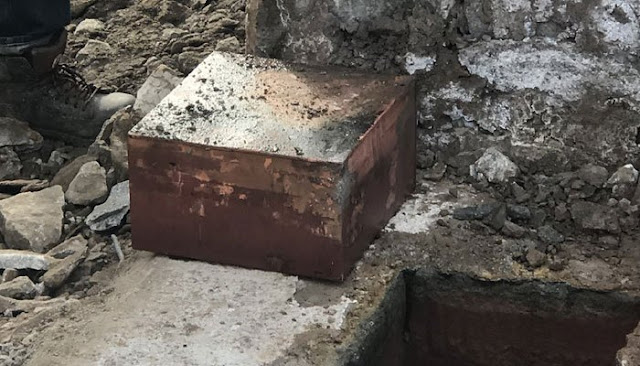 |
| The box will be opened on Tuesday, said Virginia Governor Ralph Northam. Twitter |
WASHINGTON: Workers dismantling a Confederate general’s statue pedestal discovered a copper box believed to be buried 130 years ago, the second apparent time capsule unearthed at the site.
site.
Virginia Governor Ralph Northam tweeted along with pictures of the box.
“This is probably the time capsule everyone has been looking for. According to an 1887 newspaper article, a time capsule hidden at the foot of the statue of General Robert E.Lee of the Army of Northern Virginia during the Civil War contained relics such as buttons and balls, Confederate currency, cards, a rare picture of assassinated President Abraham Lincoln in his coffin and other items, the box will open at 1:00 p.m. (1800 GMT) Tuesday, Northam said in a subsequent tweet, adding that it was “Experts believe there could be coins, books, buttons and even ammunition from the Civil War,” he said.
The statue’s base was opened by Conservatives last week, but it clearly wasn’t the capsule in that time the 1887 newspaper article because it contained three soaked books, a photo in a soaked cloth cover, and a coin.
The items appeared to be memorabilia left for posterity by some of the workers who erected the statue. The time capsule found on Monday is roughly twice as big. Lee’s statue in Richmond, the city of Virginia, which was the southern capital during the bloody conflict of 1861-65, was overthrown in September, one of several memorials the Pro-Slavery Confederation has seen in recent months. The statue became the focus of protests against racial justice last year after the death of George Floyd, a black man killed by a white Minnesota police officer. During the Civil War, the Confederate southern states separated from the United States and fought to maintain slavery, which the rest of the country had abolished.

